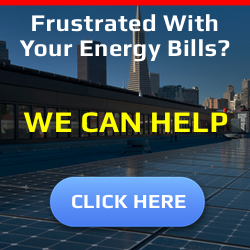The suspension of Empire Wind 1 highlights a political campaign against renewable energy in the United States.
By Germán & Co. Karlstad, Sweden | April 18, 2025
Destruction, disruption, dismantling—if it sets back progress, it seems to fit the plan. In a sharp escalation of his administration’s stance against renewable energy, President Donald Trump has moved to suspend Empire Wind 1, a major offshore wind project led by Norway’s state-owned energy company Equinor. The project, located off the coast of New York, was set to generate 810 megawatts of clean electricity—enough to power nearly 500,000 homes. Although marine construction was already underway, the project was abruptly halted, officially due to alleged procedural flaws in its approval process.
Behind the official justification lies a more troubling agenda: the systematic dismantling of clean energy infrastructure and the rollback of climate policy achievements made under the previous administration. In today’s political climate, it’s no longer tit for tat—it’s tariff for turbine. While the Trump administration claims the suspension stems from inadequate environmental review, critics argue this is merely a pretext—an ideological strike disguised as due process.
________________________________________
Empire Wind 1: A Case Study in Energy Reversal
The Empire Wind 1 project is emblematic of the Biden administration’s 30-gigawatt offshore wind goal by 2030. Approved under federal review, it secured construction permits, created jobs, and began port upgrades and onshore manufacturing.
-
Location: Offshore New York
-
Developer: Equinor (Norway)
-
Capacity: 810 MW
-
Planned Output: Power for 500,000 homes1
Interior Secretary Doug Burgum justified the suspension by pointing to insufficient analysis under the National Environmental Policy Act (NEPA), despite the project passing Bureau of Ocean Energy Management (BOEM) procedures.
However, the broader political context reveals a calculated effort to unravel progress on climate mitigation. A reversal of this magnitude, mid-construction, undermines legal stability, investor confidence, and environmental momentum.
________________________________________
Trump’s Long History of Anti-Wind Sentiment
Donald Trump’s antagonism toward wind energy is long-standing and well-documented. During his first term, he claimed—without evidence—that wind turbines cause cancer2, kill massive numbers of birds, and are aesthetically ruinous. He waged a legal battle against an offshore wind project near his golf course in Scotland, calling it a “disgrace”3.
His statements reflect more than misinformation—they’re part of a cultural narrative that frames wind turbines as symbols of elitist, globalist environmentalism.
¨In Trump’s rhetorical universe, fossil fuels are patriotic, masculine, and American, while wind turbines are weak, European, and imposed…
________________________________________
Weaponizing Permits: A Regulatory Smokescreen
By citing environmental concerns, Trump’s administration deploys an ironic inversion of climate tools to suppress climate action. NEPA, originally a safeguard for ecosystems, is now used to block environmental projects. This regulatory weaponization reframes due diligence as obstruction.
Critics, including the Natural Resources Defence Council and the Sierra Club, see a broader pattern: procedural sabotage used selectively against green infrastructure.
This approach isn’t isolated. Other offshore wind projects—Dominion Energy’s Virginia venture and Vineyard Wind in Massachusetts—now face heightened scrutiny, delays, or legal reevaluations.
________________________________________
Economic Fallout and Industrial Stagnation
Empire Wind 1 is a climate initiative and an economic development engine. The project promised:
-
Hundreds of union jobs in construction and maintenance
-
Investment in port infrastructure at the Brooklyn Marine Terminal
-
Growth in U.S.-based green manufacturing
Delays and potential cancellations jeopardize these benefits. Developers may exit the U.S. market entirely. Orsted and BP have already signalled that unpredictable regulatory climate could force them to reconsider American ventures.
Moreover, the U.S. loses ground to international competitors. China and the EU continue to expand offshore wind capacity, supported by stable policies and integrated supply chains. The Empire Wind decision positions the U.S. as a volatile, untrustworthy partner for global climate finance.
________________________________________
Cultural Warfare: Fossil Nationalism vs. Green Modernity
Trump’s energy doctrine is not economically pragmatic—it is ideologically charged. He champions what can be called “fossil nationalism”: an emotional attachment to oil, gas, and coal as symbols of American autonomy and industrial greatness.
Green energy, conversely, is framed as suspiciously foreign, overly complex, and beholden to multilateral treaties. Wind turbines, especially offshore, are not just physical structures—they’re proxies in a cultural war over national identity.
Trump’s narrative seeks to mobilise working-class scepticism of climate policy by equating fossil fuel preservation with job security and green energy with elite imposition. Yet he ignores that wind projects like Empire Wind 1 are now union-backed and industrially rooted.
________________________________________
Environmental and Strategic Consequences
The halt of Empire Wind 1 undermines both national and global climate objectives. Offshore wind is crucial to decarbonizing coastal grids and meeting state-level mandates.
For instance:
-
New York aims to derive 70% of its power from renewables by 20306
-
Empire Wind was integral to achieving this through localized clean energy
Its suspension would mean greater dependence on fossil fuels, elevated emissions, and missed targets. Nationally, it would weaken America’s negotiating credibility in global climate summits such as COP30.
The decision prolongs environmental injustice for frontline communities, already burdened by air pollution.
________________________________________
Legal and Political Backlash
Litigation is imminent. Equinor has signaled it may sue under breach of contract, citing the billions already invested. New York State has vowed to challenge the federal intervention, invoking its constitutional authority over local economic development.
Labour unions, including the IBEW and SEIU, have also criticised the decision as a betrayal of American workers.
In Congress, a new bipartisan group focused on “clean energy sovereignty” is drafting legislation to prevent the arbitrary revocation of energy permits after approval—a signal that Trump’s overreach could backfire politically.
________________________________________
Conclusion: The Winds of Retrenchment
The Empire Wind 1 suspension is not merely a bureaucratic hiccup—it is a symbolic battle in a larger struggle over the future of American energy. Trump’s war on wind is rooted not in science, but in spectacle, grievance, and identity politics.
In reversing clean energy progress, Trump gambles not only with climate stability but with America’s industrial future and global standing. Whether the courts, states, or voters ultimately reverse this decision, the message has been sent: even in the age of climate emergency, old resentments can still blow powerful headwinds.
How Trump’s Policies Will Slow—but Not Kill—a Transition to Cleaner Energy
The administration has pledged to cut support for renewable-energy initiatives. Here’s how it could shake out.
WSJ By Katherine Blunt, April 16, 2025
The Trump administration has pledged to boost the oil-and-gas industry, in part by cutting support for renewable energy and emissions-reduction initiatives. Many executives and analysts say a transition to cleaner energy will continue regardless, but legislative uncertainty and policy changes are expected to slow the changeover.
Here’s what to know about how the Trump administration’s decisions could affect the industry:
1. Tariffs are expected to drive up project costs
President Trump’s sweeping tariffs are expected to affect almost every material needed to build wind and solar farms, battery-storage facilities, electric vehicles and other projects meant to reduce carbon emissions. Levies on imported steel, aluminium, solar modules and minerals will drive up construction and development costs.
“It’s premature to give an assessment of the policy, but there’s obviously deep concern, not just within our industry, but across the U.S. economy,” says Frank Macchiarola, chief advocacy officer for the American Clean Power Association trade group.
The U.S. mainly relies on Asia to produce solar modules, the building blocks of large-scale solar farms and rooftop solar installations. According to analysts at investment bank Jefferies, the U.S. imported roughly 55 gigawatts of solar modules last year. Analysts say panel inventories in the U.S. are relatively strong, but project delays and cost increases are likely imminent as developers draw from those stockpiles.
2. Parts of the Inflation Reduction Act are at risk
The Inflation Reduction Act, the Biden administration’s signature climate bill, contains numerous clean-energy tax credits. Trump has talked about repealing the legislation, though executives and analysts expect him to take a more nuanced approach to dismantling parts of it.
“Thanks to President Trump, America is leading the way in lowering costs by removing red tape and unleashing affordable, abundant and reliable American energy,” an Energy Department spokesperson said.
The Inflation Reduction Act includes tax credits for wind, solar, and battery projects, electric vehicles, clean fuel production, and energy-efficiency initiatives. The credits have helped spur over $100 billion in manufacturing investments, many benefiting Republican-voting states.
Last month, 21 House Republicans wrote a public letter in support of preserving the tax credits, saying that they have helped to increase domestic manufacturing and keep utility costs down.
“Both our constituencies and the energy industry alike remain concerned about disruptive changes to our nation’s energy tax structure,” they wrote.
3. Development of wind, solar and battery storage may slow
Electricity demand in the U.S. is expected to surge after decades of mainly remaining flat. A study last month by S&P Global Commodity Insights found demand is likely to increase by 35% to 50% by 2040 due to domestic manufacturing growth, data-centre development, electric-vehicle adoption and other efforts to phase out the use of fossil fuels.
The push to develop AI has turbocharged demand projections as tech companies race to invest billions of dollars in power-hungry data centres. Some centres consume as much power as midsize cities, setting off a scramble among power and utility companies to figure out how to accommodate them. While some utilities have incorporated more gas into their planning than before, they still expect alternative energy will be needed to meet the demand.
Preparing a turbine for installation at Duran Mesa, a wind farm in central New Mexico. Photo: Steven St. John for WSJ
Tech companies, meanwhile, have pledged to continue the clean-energy push. Each of the largest tech companies has pledged to substantially reduce its emissions in the coming years, partly by working with power producers to speed up the development of wind and solar farms and other forms of clean power.
“We’re still seeing a lot of new clean-energy generation coming online, and we very much expect that to continue,” says David Grumhaus, president and chief investment officer of Duff & Phelps Investment Management. “That investment just isn’t going to shut off.”
4. Electric-vehicle adoption faces roadblocks
The Trump administration halted federal funding earlier this year for expanding the nation’s network of electric-vehicle charging stations. The administration also suspended approval of state plans to spend about $5 billion in grants to add EV fast chargers along highway exits, which are meant to help drivers feel more comfortable driving long distances without fear of their batteries running out of juice.
Congress had approved the funding as part of the 2021 Infrastructure Investment and Jobs Act.
Tariffs are also expected to drive up the cost of electric vehicles, which are already more expensive than gasoline-powered ones. The U.S. largely relies on China for imports of lithium-ion batteries used to power EVS and stabilise the power grid as more wind and solar projects come online. Many U.S. automakers have been pulling back on plans to sell new EVS.
“The EV market is extremely volatile and uncertain,” says Vanessa Miller, a litigation partner with Foley & Lardner LLP who leads the firm’s national automotive team. “We’re trying to protect U.S. jobs, but we’re going to make vehicles cost prohibitive at the same time.”
5. Fewer power plants may close if Trump repeals legislation
Coal-fired power plants in the U.S. have been under siege for years as wind and solar farms and gas-fired plants have become cheaper sources of electricity. Dozens of coal plants have closed in recent years. According to the Energy Information Administration, utility companies and power producers plan to retire 8.1 gigawatts of coal-fired capacity this year, or 4.7% of the total U.S. coal fleet.
Last year, the Biden administration implemented rules requiring coal-plant operators to significantly reduce emissions and pollutants using carbon capture and other technologies. This year, the Environmental Protection Agency said it would reconsider aspects of those rules and established an email address for companies seeking certain exemptions.
This month, Trump signed an executive order to boost support for the U.S. coal industry by lifting specific barriers to mining and using it to generate power.
While Trump’s changes aren’t expected to lead to the building of new coal plants, they will likely slow the closures. A study by Rhodium Group found that a rollback of the Biden-era rules, combined with a repeal of the Inflation Reduction Act, could more than halve coal-plant retirements by 2035.
“The biggest tool in the toolbox is just saying, ‘OK, you don’t actually need to comply with those regulations,’ ” says Ben King, who co-wrote the study. “The other thing you can do is make alternatives to coal more expensive, and that’s where [the Inflation Reduction Act] tax credits come into this.”
________________________________________
Sources
-
Equinor. “Empire Wind 1 Project Overview.” https://www.equinor.com ↩
-
Trump, D. “Windmills cause cancer.” Rally, 2019. Video coverage available via NPR. ↩
-
BBC News. “Donald Trump loses legal battle against Scottish wind farm.” 2015. ↩
-
Natural Resources Defense Council. “NEPA: From Safeguard to Scapegoat.” 2024. ↩
-
Reuters. “Offshore wind giants warn of US policy instability.” March 2025. ↩
-
NYSERDA. “New York State Energy Plan.” 2023. ↩









